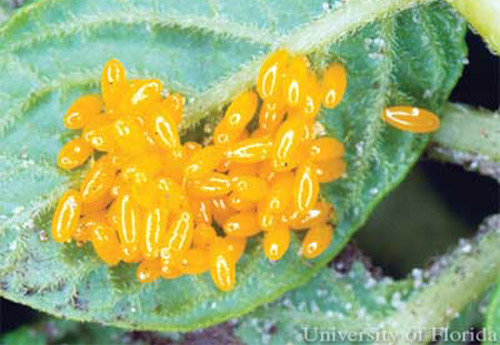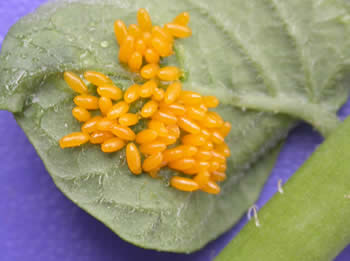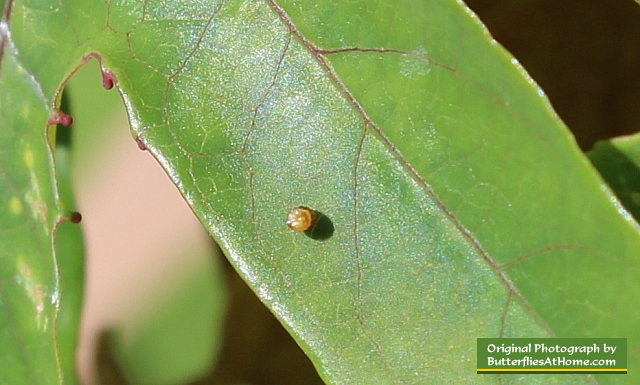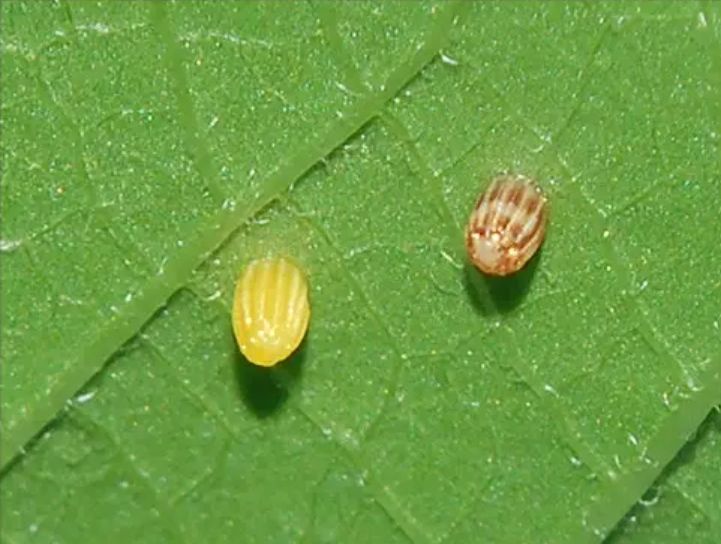Have you ever discovered mysterious orange eggs adorning the leaves of your beloved plants? If so, you’re not alone in your curiosity. The presence of orange eggs on plant leaves can be intriguing, and understanding their origin and significance is crucial for effective pest management and plant care. In this article, we’ll learn about the insects or pests that lay these eggs and discover how to identify and handle them.
Insect eggs can change color as they grow. The color of an egg can vary depending on the type of insect and how old the egg is. Some eggs start white and then turn yellow, orange, or black as they get closer to hatching. So, when you see insect eggs, their color can tell you how developed they are. Why do I say this? Because the same insect’s eggs will have different colors depending on when you find them. That’s why we make a series of eggs in different colors on plant leaves, with clear notes on which phase it is. More suggestions are at the end of this post.
Now, we dive into the main topic of today’s article: the red eggs you find on plant leaves. With all I know, they are probably Colorado potato beetles or nearly-hatched milkweed bug eggs.
#1. Colorado Potato Beetle (Leptinotarsa decemlineata)
The Colorado potato beetle is a notorious pest known for its destructive impact on potato plants. These beetles lay their eggs on the underside of the leaves of potato plants and other related species. The eggs are small, oval-shaped, and typically orange or bright yellow.
Effectively controlling potato beetle populations is crucial for maintaining healthy crops and minimizing losses. They are often clustered together in groups of 10 to 30 eggs. After approximately 4 to 10 days, the eggs hatch into voracious larvae, which will feed on the plant’s foliage and cause significant damage.


Read more: Detecting These Orange Bugs On Squash Plants To Provide Better Care.
A few notes on how to deal with Colorado potato beetle eggs: Inspect the undersides of potato leaves and manually remove the clusters of orange-yellow eggs. Encourage natural predators like ladybugs and birds to help control the beetle population. Apply neem oil spray to disrupt egg development. Practice crop rotation and plant potatoes early in the season. Regularly monitor your plants and remove newly laid eggs promptly.
Reference: Colorado Potato Beetle – The University Of Maine.
#2. Nearly-hatched Milkweed Bug Eggs
When milkweed bug eggs are close to hatching, they undergo notable changes in appearance. Initially, these eggs are small, oval-shaped, and have a vibrant yellow color. However, near the hatching stage, the eggs darken and take on a distinctive reddish-orange hue. This transformation in color is a clear indicator that the eggs are nearing the end of their incubation period.
Milkweed bug eggs themselves are not harmful to plants as they do not directly cause any damage to the plant. It is the feeding activity of the nymphs (the immature stages of the bugs) that may have an impact on the plants. After hatching, the nymphs will feed on the sap of the milkweed plant, which can lead to localized damage to the plant tissues.
Read more: Pay Attention When Finding These Red Bugs On Squash Plants.
It’s important to remember that milkweed bugs are not considered significant pests, and some presence can be beneficial for supporting monarch butterflies. If you still want to remove them, here are a few notes: You can manually remove them by gently scraping them off the leaves or stems. Pruning affected parts and encouraging natural predators like ladybugs can also help control their population. You can use organic insecticides like neem oil or insecticidal soap if necessary.
Reference: Milkweed Bug, PDIC Factsheets – NC State Extension.
#3. Nearly-hatched Gulf Fritillary Eggs
When Gulf Fritillary eggs are about to hatch, they undergo noticeable changes. Initially, these eggs are tiny, oval-shaped, and pale yellow. The eggs darken and take on a distinct dark orange color. This color change indicates that the eggs are close to hatching and that the caterpillars will soon emerge.
Gulf Fritillary eggs themselves are not harmful to plants. The eggs are typically laid on passionflower vines, the host plants for Gulf Fritillary caterpillars. Once hatched, the emerging caterpillars will eat the leaves of the passionflower plant. While their feeding activity can cause some damage to the leaves, passionflower plants are generally resilient and can tolerate their presence.


Remember to maintain a healthy habitat for these butterflies by undisturbing some eggs. But if you still want to remove them, carefully inspect the passionflower leaves and remove any eggs by gently scraping them off. Dispose of the eggs away from the plants to prevent hatching.
I also found this video about Gulf Fritillary egg hatching. See more:
Summary
Our team explored the exciting topic of orange eggs on leaves and what they mean. We learned that the color of insect eggs can tell us important information about their growth stages. We discussed insects like Colorado potato beetles and Milkweed bugs that lay orange eggs. Identifying these eggs correctly is crucial to take the proper steps to protect our plants.
Have you experienced the same thing with the same insects? Let me know if you spot anything else. Gardening is all about doing and observing 🙂 Here are a few more suggestions for your upcoming read, as I promised:
















![[GHC Featured Image] Orange Eggs On Leaves orange eggs on leaves featured image](https://greenhousecenter.net/wp-content/uploads/2023/07/GHC-Featured-Image-Orange-Eggs-On-Leaves-696x392.jpg)


